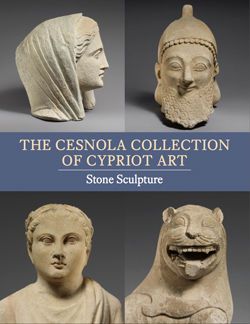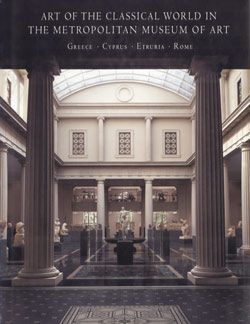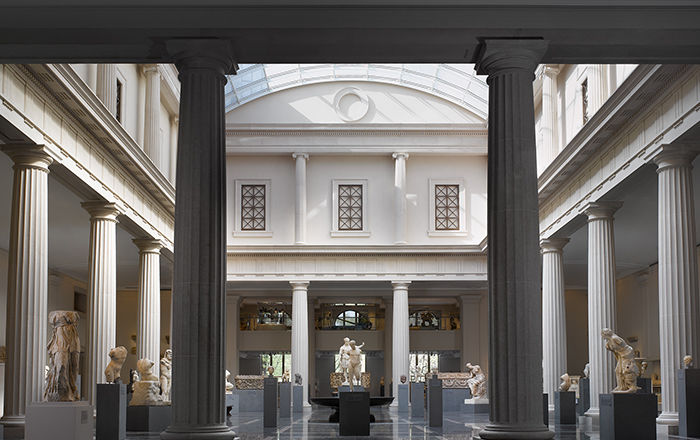Limestone statue of Aphrodite holding winged Eros
Not on view
From the eighth century B.C. the Greek poets associated the goddess Aphrodite with Cyprus, but on the island itself the local Great Goddess did not become assimilated with Aphrodite until the fourth century B.C., when the worship of many Greek divinities was introduced. In this work the goddess is clearly identified as Aphrodite by the small figure of her son Eros, winged god of love, who perches on her shoulder. The Cypriots did not adopt a conventional Greek way to represent Aphrodite but transferred their own iconography for the Great Goddess of the island to their images of Aphrodite. From the ninth to the sixth century B.C. images of the Cypriot Great Goddess were inspired by Eastern art, especially that of the Syro-Phoenician goddess Astarte, who appeared nude. From the fifth century the local goddess was shown with a high round headdress decorated with vegetal and floral motifs, as befits a fertility goddess. Here Aphrodite wears such a crown decorated with palmettes alternating with nude females—recalling the figures of Astarte. She has long locks falling over her shoulders, a motif taken from early Greek sculpture, and she wears a chiton with himation (cloak) drawn up over the back of the headdress.
#1110. Limestone statue of Aphrodite holding winged Eros
This image cannot be enlarged, viewed at full screen, or downloaded.
This artwork is meant to be viewed from right to left. Scroll left to view more.








